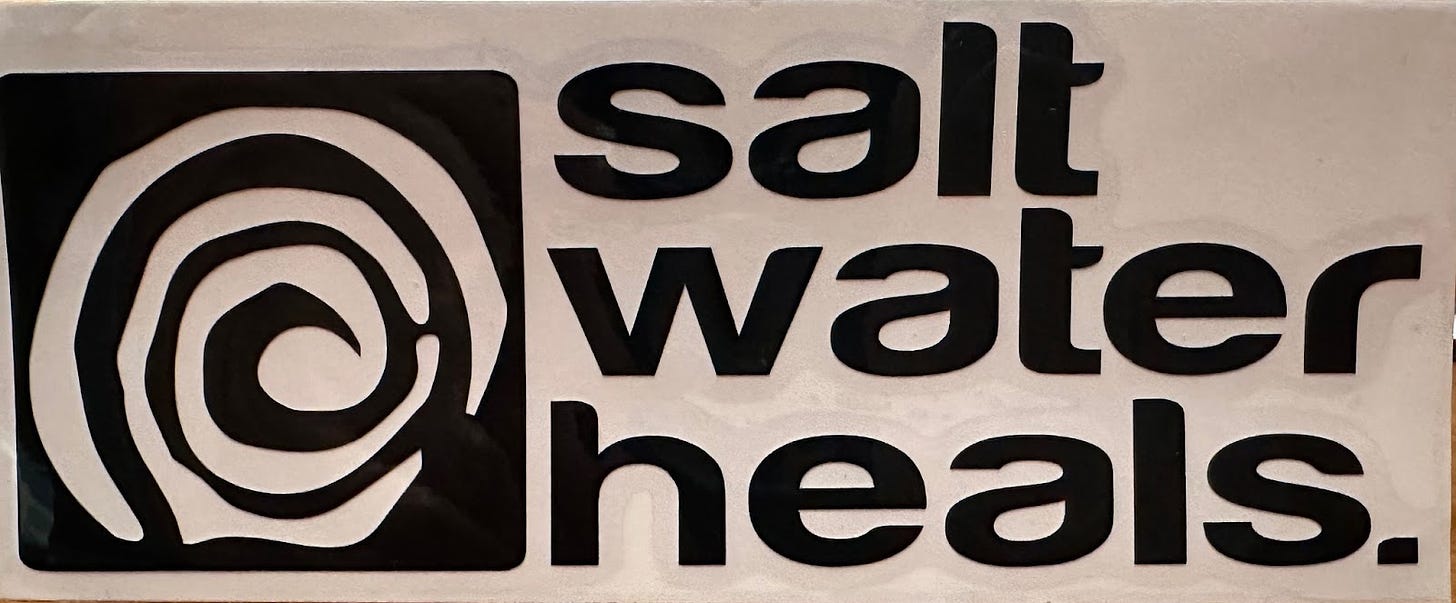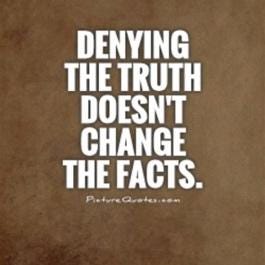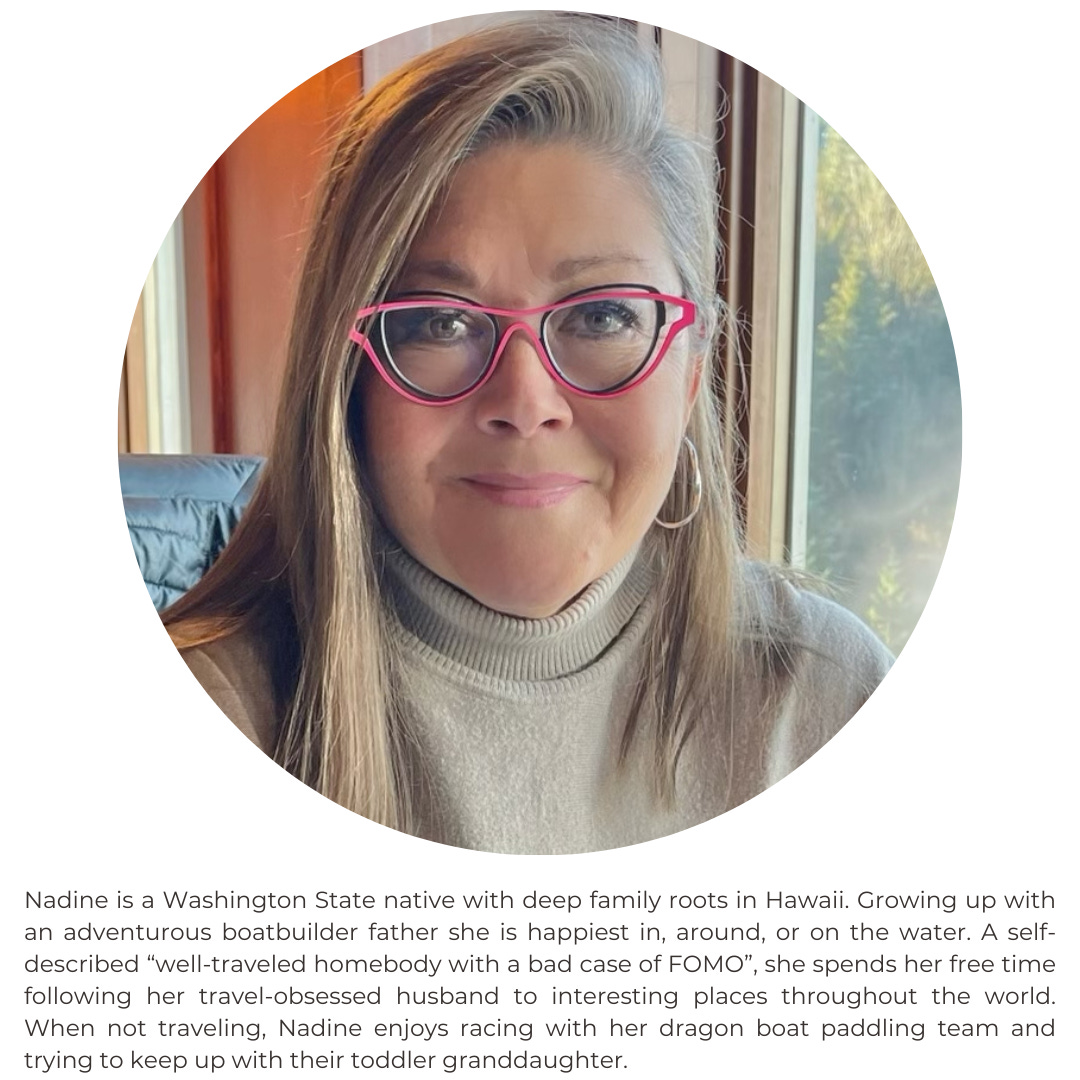One of our regular contributors, Nadine, joins us today for a special letter in light of next week’s election. While we’ve all heard so much leading up to this season, I appreciated Nadine’s take on discerning the what and why behind a message. Her perspective always makes me continue to think long after I read her letters or talk with Nadine in person. And of course, if you haven’t already voted, I urge you to do so. Sending you all deep breaths and clarifying walks outside as we navigate this next week together and we’ll see you in two weeks! —Molly
The cultural environment we're living in, where people often (over)share their opinions unprompted, has me reflecting on how, as a society in the U.S., we've lost the ability to distinguish between someone's personal truth and actual facts.
A Seattle news station launched a campaign in 2019 using the slogan, “We Stand for Truth.” I understood the intent behind the campaign, and purportedly, it was a ratings success for the news station. However, the slogan never made sense to me, especially as a byline for a news organization. The reality is that there is a difference between truth and fact.
Given that difference, shouldn’t a news organization focus solely on facts?
So, let’s pause for a moment and talk about definitions. Facts are objective information that can be verified through evidence and observation. They are the building blocks of scientific inquiry and empirical research, providing a foundation for consistent and reliable knowledge.
Truth may include facts but is influenced by personal experiences, cultural contexts and societal values.
In contrast, truth is often more subjective and can vary between individuals and cultures. Truth may include facts but is influenced by personal experiences, cultural contexts and societal values.
Therefore, when we say two opposing things can be true, that is, well, true, right? But what about “alternative facts?” Can there be such a thing?
One of my mother’s truths that I have been known to repeat (and believe, by the way) is that if you have an ache or pain or a minor wound, such as a cut or an insect bite, take a swim in the salt water. You don’t need medicine or a trip to urgent care for everything—just go get in the water, and you’ll be fine.

Remember that my mother grew up in Hawai’i, where this was a reasonable option. Trying to follow her direction in the 50°F waters of Puget Sound was a little more challenging.
My mom’s truth that salt water was the panacea for most if not all, diseases included some facts (e.g., salt water contains sodium, magnesium, and calcium, which are all good for the skin) and many cultural beliefs. My mother’s absolute truth, however, will provide zero physical benefits to you if you don’t swim, are afraid of potential predators in the ocean or are potentially becoming hypothermic.
Over the last several years, we have seen the conflict between truth and fact play out most often in the political and media arenas. With the popularization of social media and a U.S. presidential election looming, many more clashes may be present.
In politics, facts are often challenged, and truth becomes a potent battleground for competing beliefs. Politicians present selective facts or information in ways that support their version of the truth. This has led to polarization, as people align themselves with truths that resonate with their values and beliefs, often disregarding objective facts that contradict their worldview. The modern-day fact-checking movement can be dated back to the presidency of Ronald Reagan, who was widely ridiculed for his claim that trees cause four times more pollution than automobiles.1
People align themselves with truths that resonate with their values and beliefs, often disregarding objective facts that contradict their worldview.
The current presidential candidates are regularly fact-checked, and for good reason. In the first presidential debate (before President Biden pulled out of the race), former President Trump was noted as having 28 false or misleading statements in the June debate vs. President Biden’s nine false or misleading statements.
Likewise, with media outlets, sensational stories sell. By their very nature, these stories being told dramatically are meant to impact viewers’ emotions in a way that a story told using only facts would not.
In other words, a story can be told using only facts, but depending on how it’s presented, it could potentially distort how the facts are perceived. This is especially true with social media, where subjective truths or misinformation can be amplified and rapidly spread, creating an echo chamber where people are only exposed to information that reinforces their preexisting beliefs.
I have a love/hate relationship with social media. Because I enjoy researching subjects that interest me, my social media feeds become entirely inundated with random groups to follow or articles to read related to my interest in the moment. I have to be careful not to rely solely on the articles in my feed, as those are likely one-sided simply based on my previous viewing history. They could be full of mis- or disinformation, which may not be a problem if I’m looking at funny cat videos, but it matters if I’m researching prison reform.
This is not to say that facts are better than truths or vice versa. It’s a matter of understanding the differences, navigating the relationship between reality and what we think should or could have happened, and not misrepresenting one for the other. While respecting diverse perspectives and the subjective nature of truth is essential, upholding the integrity of facts is equally vital.
So, what should we do about all the divisive, truth-as-fact language being used?
First, we are only in control of our own actions and reactions. And by encouraging critical thinking skills, promoting factual integrity, and respecting diverse truths, we can empower each other to gauge the information we receive more effectively, recognize biases, and understand the importance of objective facts to create a more united sense of humanity.
Nadine’s Five Favorite Things (and that’s a fact!)
L’Occitane Almond Shower Oil smells amazing and makes your skin super soft. Great in summer after sun and in winter with drying heaters and cold temps.
After getting eyelash extensions applied by an expert for a solid seven years, I decided it was time to save a few dollars and figure out how to do my own lashes. My amazing ‘lash lady’ shared the products she used: Lashify Control Kit for everything you need to get started. Inexpensive additional lashes: Hannahool Cluster Lashes on Amazon.
Theo Eyewear – I’ve talked about my eyewear in the past, and I’m doing it again because it’s such an important part of my personality. I have found that Theo also fits my style and my face. 😊
When I want to laugh my head off, I watch the antics of the wife and husband duo of Team Balmert. They attempt viral challenges like the tortilla challenge, and he tries things that many would avoid (getting his nose hair waxed). The resulting videos are beyond hysterical.
I’ve always loved vintage-inspired Hawaii art, and artist Nick Kuchar creates some of my favorites.
In gratitude,
Nadine Rosendin
P.S. Nadine dove into the productivity paradox in Letter 109 and unpacked “othering” in Letter 22.
THE RISE OF POLITICAL FACT-CHECKING, How Reagan Inspired a Journalistic Movement: A Reporter’s Eye View, February 2012, New America Foundation, www.Newamerica.net







My college friends and I got in a bad habit of using "objectively" to begin sentences that were most definitely subjective as we debated back and forth about which on campus dining option was better or which party would be more fun....far less serious issues when it comes to fact vs. truth but a good reminder how people can be SO convicted by their truths that they often forget that they aren't facts.
I love all your posts, Nadine, and this is another fantastic one! I really appreciate the distinction between these two terms, especially during this election season.